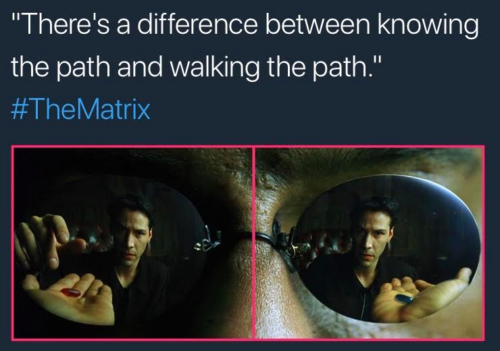Matrix organization structures can break down silos and accelerate collaboration. Or they result in employees being confused about expectations and accountabilities. You can't leave it to chance. Being intentional about how to work and manage in a matrix is a must.
Matrix organization structures are incredibly common. But they often take a toll on people by harboring ambiguity and unclear expectations. Each is the enemy of employee engagement. It’s not a kind of loud bang that demands your attention. Instead, it is an undercurrent doing significant damage left unattended.
Managing in a matrix can be nuanced and even feel a little clunky. It requires you being a willing partner and a humble, intentional leadership approach. You need to extract all the potential benefits of a matrix while avoiding the pitfalls.
How to do this doesn’t get talked about enough. And leading practices are not intuitive for everyone and so worth exploring.
You absolutely can guide toward the positives and avoid the possible trap doors.
Let’s go!
(If you are short on time, get a shareable, printable PDF of this post, click here.)
Sometimes The Matrix Sucks
Several years ago I was leaving a sales meeting I hosted. Someone left a legal pad behind. The notes seemed to focus on one of the product lines, so I assumed it was our product sales leader.
So, I couldn’t help but notice a rather large and bold THE MATRIX SUCKS scribbled down the side of the legal pad. Alright then!

I went her office with the legal pad. She reached to grab and realized what was on the front of it. She looked embarrassed. We laughed. “I said, I’m sure it does, tell me why.”
She told me about a series of meetings – sales meetings with me (her direct line manager) and product meetings (with her matrix manager.) The agendas, objectives, results sounded like they were from two different organizations. Most important, she was some combination of frustrated and burdened by a pile of expectations.
She was an excellent product sales leader whom we had put in an untenable spot. We owed her a better reality. The product line manager and I worked through it all (see 5×5 below) over the next few weeks. We got to a much better place.
It was a humbling and instructive moment. I lived and managed on all sides of a matrix environment for years. The whole thing was a reminder for me to retool and be more intentional in partnering with the matrix manager.
It was an “empty your cup” type moment.
Check out that post Why The Best Leaders Empty Their Cup First.
What Do We Mean By Matrix Work Environment
It’s helpful to look at some of the fundamentals of matrix organization structures.
A matrix exists in an organization with two or more dimensions in how it aligns itself to customers (internal and external). Classic matrix structures include a product/function and geography OR an industry specialty and project/client team. 84% of people in large corporations report being at least slightly matrixed (McKinsey).
In practice, this means people have two managers. One is called the direct line manager and the other the dotted line manager. Herein lies the need for some extra effort on the part of the managers.
Whether a matrix structure is rigidly defined as it is in large organizations, they also exist naturally. Often employees identify themselves across a few dimensions.
When you ask someone their role, it is common to get responses such as:
- I’m an architect specializing in healthcare out of the Raleigh Office.
- I’m an HR generalist serving the West Region.

Dotted Line Reporting Structures, What The Heck?
Matrix structures are used to foster an increase in communication and collaboration to bring better outcomes to customers. Executed well they reduce the silos.
However, there are potential pitfalls with matrix management. They include ambiguity for employees, mirky accountability and slowed decision making.
One of the real-life sticking points centers on the solid and dotted line reporting for employees. It’s typically about decision rights – who has and who influences. Understanding who affects versus who ultimately controls compensation, ratings and career advancement is always top of mind.
People care who they “work for” – their direct manager. You can’t underestimate how important this is for people. And it informs why good communication with the dotted line or matrix manager is so important.
So Does A Matrix Organization Structure Work?
It depends.
You can always find someone willing to debate whether or not matrix management works. McKinsey’s article Revisiting The Matrix Organization stated:
A matrix structure gives rise to a lack of clarity about responsibilities, expectations and to whom they report.
Additionally, they include:
Gallup research indicates that clarity of expectations is a foundation for building an engaged workplace that performs at high levels.
At best there is the additional risk in matrix management around expectations and engagement.
A structure isn’t a strategy, however. Matrix structures are common today and likely to be present in the future with collaboration at a premium.
Your job is to optimize the benefits. Most important you need to lead so that employees thrive. How you move and manage the organization determines your effectiveness.
Communication, Alignment, and Trust
The video clip here about John’s performance review is everything that can go wrong with matrix management. It looks like a Saturday Night Live parody gone awry. Unfortunately, it’s all too real for some people.
Most important, it highlights how dotted and straight lines, unclear expectations, poor communication and lack of trust become the employees’ burden. Final point, unlike the video, direct reporting isn’t a weapon a manager should wield.
https://youtu.be/Pop-QkUQpwA
Leading well in the matrix comes down to quality communication and the resulting alignment and trust. It works when reasonable people are in business together and consistently acts with intention. Conversely, when communication wanes and reasonableness is absent, it is a mess. It can even…suck.
Related: Get the tool How To Communicate Organizational Change So It Doesn’t Kill Your People (Or You)!
What Good Looks Like
Two managers in the matrix need to get on the same page and define success. When you have that settled, it’s then about a finite number of tactics you can expect someone to execute.
Each manager will have things around the edges they want to accomplish. Both need to be mindful of activity creep. The extra stuff you pile on someone has a way of making it come off the rails. You are constructing one job, not two.

Leading People In A Matrix Organization
Below are 5 do’s and don’ts.
You may look at this list and be underwhelmed or think that sounds easy. Mostly you are right.
The problem is most managers working side by side in a matrix don’t stop and talk about a fundamental approach for people they manage. As evident in the story I shared about the product sales leader, I was one of those managers.

A few closing comments on do’s and don’ts:
- Do’s – Success rests on your commitment to high quality, consistent and transparent communication between you and your matrix partners.
- Dont’s – It is critical to demonstrate your understanding and support of your people having two points of orientation. You need to give space and importance to both without creating undue complexity.
Push yourself and your business partner on these 5 x 5 items. If you (really) follow and do so consistently, you run the risk of making the matrix and your people realize their potential!
11 Tips To Survive A Matrix Structure! https://t.co/29YSUfVeNm #Matrix #leadership pic.twitter.com/c2yNyAlhP2
— Jeroen De Flander (@JeroenDeFlander) March 23, 2018
Making It Work For Your People
You set the table correctly for your employees living in the matrix by providing the clarity they crave (and you need them to have). It comes with communication and cooperation. While it requires some extra work and intentionality on your part, it ensures you have the matrix and not the other way around!
Question: What is your biggest challenge working in a matrix organization?
Tools For You
Here is the McKinsey Study.
For a PDF of this blog post, click here.

